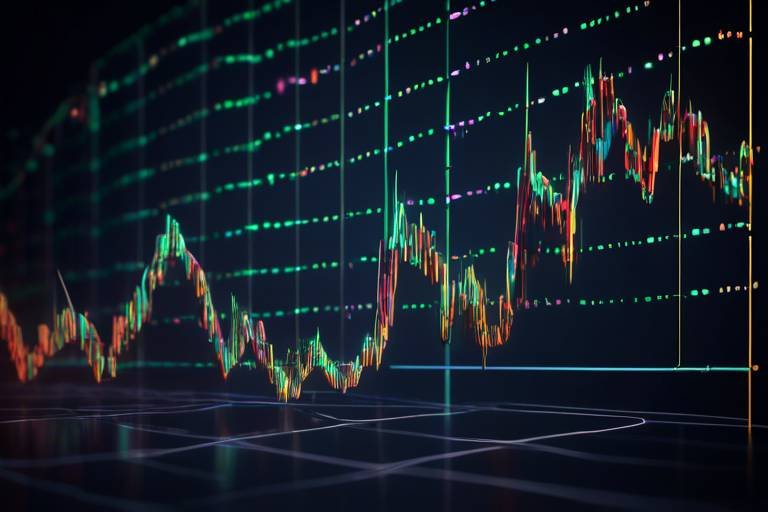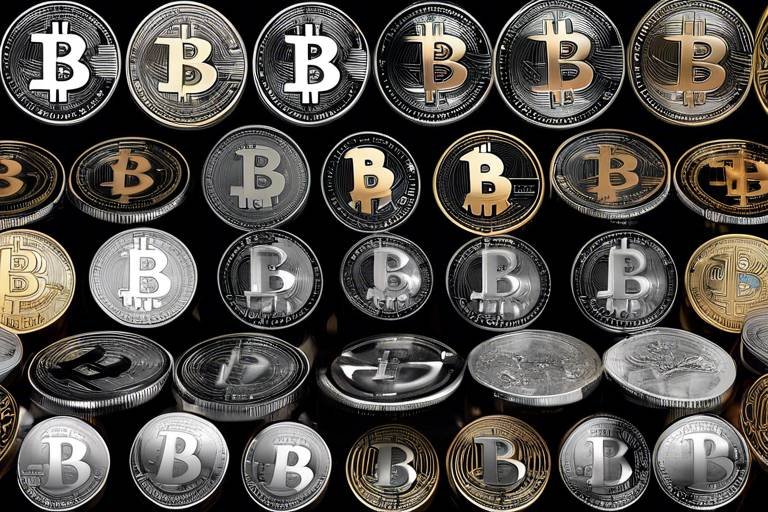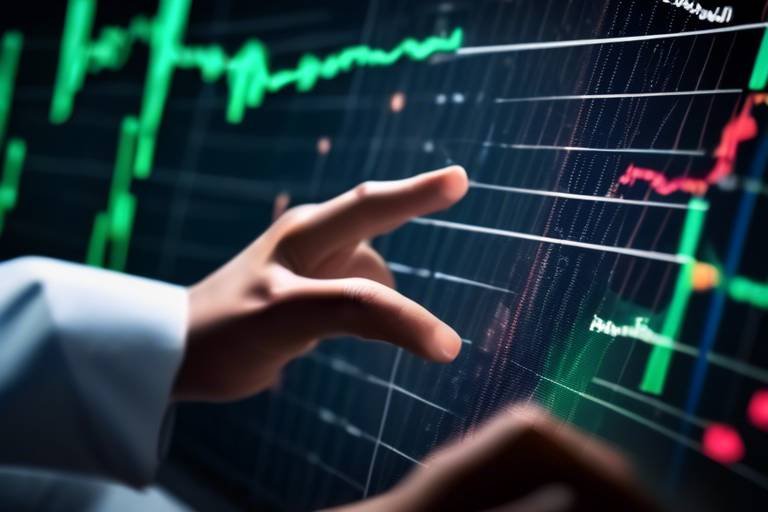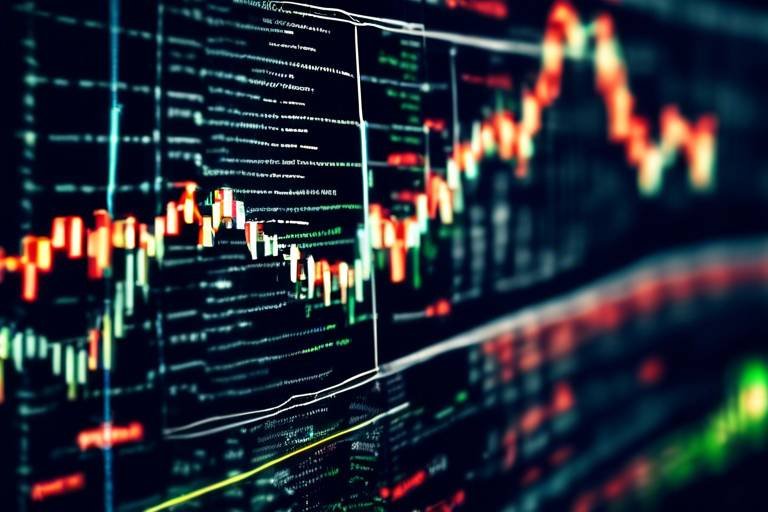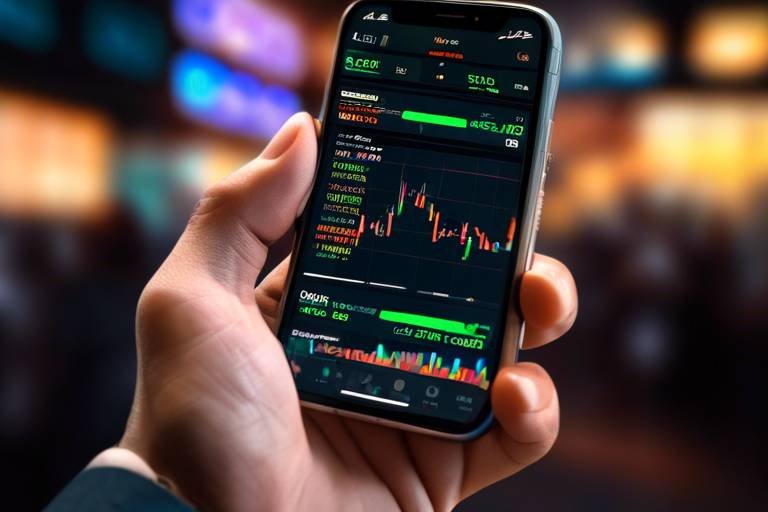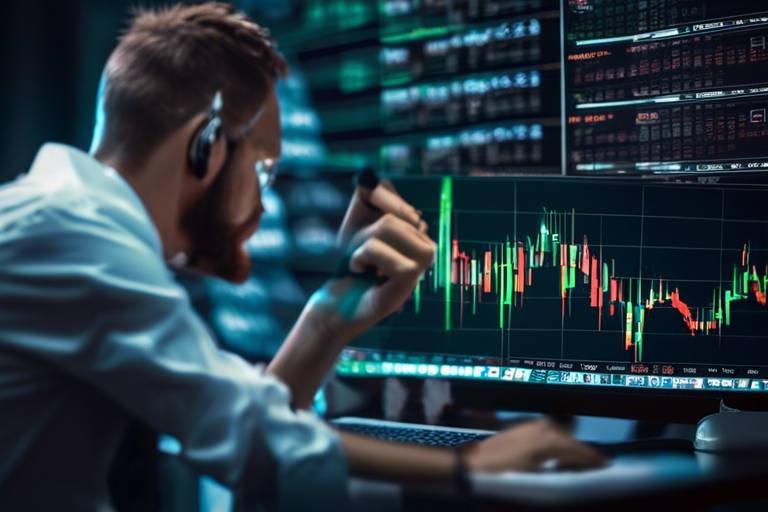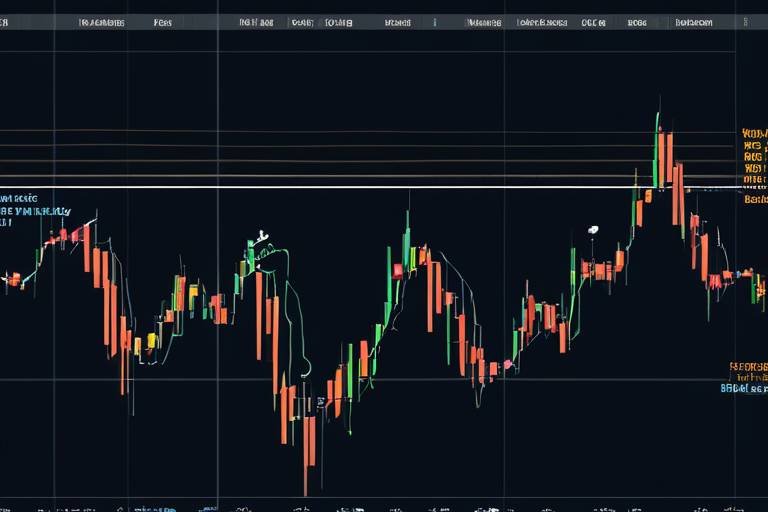Using Elliott Wave Theory in Crypto Trading
Cryptocurrency trading can often feel like navigating through a chaotic storm, where the waves of price movements can either lift you to new heights or crash you into the depths of despair. One powerful tool that traders can use to make sense of this tumultuous environment is Elliott Wave Theory. This theory provides a framework for understanding market trends by identifying recurring patterns in price movements. In this article, we will explore how Elliott Wave Theory can be applied specifically to the world of crypto trading, helping you to not only predict price movements but also make informed investment decisions based on wave patterns.
Imagine you’re standing on the shore, watching the waves roll in. Some waves are big and powerful, while others are small and gentle. In the same way, the cryptocurrency market is filled with waves of various sizes and strengths, each telling a story about the market's current sentiment. By learning to recognize these patterns, you can position yourself to ride the waves of opportunity instead of getting swept away by the currents of unpredictability.
Elliott Wave Theory is built on the premise that market movements are not random but rather follow a predictable pattern of impulse and corrective waves. Impulse waves represent strong market movements that indicate a trend's direction, while corrective waves are retracements that often signal a pause or reversal. Understanding these waves can be your compass in the often murky waters of cryptocurrency trading.
As we delve deeper into this article, we will break down the foundational principles of Elliott Wave Theory, explore how to identify wave patterns in crypto charts, and provide practical trading strategies that leverage these insights. Whether you’re a seasoned trader or just dipping your toes into the crypto waters, this guide will equip you with the knowledge to navigate the waves with confidence.
- What is Elliott Wave Theory? - It is a technical analysis tool that identifies recurring patterns in market movements, helping traders predict price trends.
- How can I identify impulse and corrective waves? - Impulse waves move in the direction of the trend, while corrective waves move against it. Learning to spot these patterns on charts is key.
- Can Elliott Wave Theory be applied to any cryptocurrency? - Yes, it can be applied to any asset class, including cryptocurrencies, as long as there is sufficient price data.

Understanding Elliott Wave Theory
Elliott Wave Theory is a fascinating concept that can significantly enhance your trading strategies, especially in the ever-changing landscape of cryptocurrencies. Developed by Ralph Nelson Elliott in the 1930s, this theory proposes that market prices move in repetitive cycles, driven by the collective psychology of investors. It’s like watching a dance where the market moves to the rhythm of human emotions—fear and greed. This rhythmic movement can be broken down into distinct patterns, which traders can study to predict future price movements.
The core idea behind Elliott Wave Theory is that market trends unfold in a series of waves. These waves are categorized into two main types: impulse waves and corrective waves. Impulse waves represent strong market movements in the direction of the trend, while corrective waves are retracements that go against the prevailing trend. Understanding these two types of waves is crucial for anyone looking to navigate the volatile world of crypto trading.
In essence, the Elliott Wave Theory operates on the premise that market participants tend to react similarly to certain stimuli, leading to predictable patterns. For example, when a cryptocurrency experiences a significant surge, traders often jump in, driven by excitement and fear of missing out (FOMO). This collective behavior can create identifiable wave patterns that traders can use to their advantage. The theory suggests that these patterns can be observed on various timeframes, making it versatile for both short-term and long-term trading strategies.
To further illustrate the importance of Elliott Wave Theory, consider the following table that outlines the basic structure of a complete wave cycle:
| Wave Type | Direction | Characteristics |
|---|---|---|
| Impulse Wave | Upward | Five sub-waves, strong momentum, indicates a bullish trend |
| Corrective Wave | Downward | Three sub-waves, retraces previous gains, indicates consolidation |
By recognizing these patterns, traders can position themselves more effectively in the market. For instance, if you identify an impulse wave, it might be a good time to enter a long position, anticipating further price increases. Conversely, spotting a corrective wave could signal a moment to take profits or even short-sell, depending on your strategy.
In conclusion, Elliott Wave Theory is not just a theoretical framework; it’s a practical tool that can help traders make informed decisions based on market psychology and historical price movements. By understanding and applying this theory, you can gain a significant edge in the unpredictable world of cryptocurrency trading.

Identifying Wave Patterns
When it comes to trading cryptocurrencies, understanding wave patterns is essential for making informed decisions. Just like a surfer waits for the perfect wave to ride, traders must learn to identify these patterns to capitalize on market movements. Elliott Wave Theory provides a roadmap for recognizing these patterns, which can significantly enhance your trading strategy.
At the core of Elliott Wave Theory are two main types of waves: impulse waves and corrective waves. Each of these waves serves a unique purpose in the overall market cycle. Impulse waves push the price in the direction of the trend, while corrective waves represent temporary pullbacks. Understanding these two types of waves is crucial for traders, as they can help predict future price movements.
To identify these wave patterns effectively, traders often look for specific characteristics. For instance, impulse waves typically consist of five smaller waves, labeled as 1, 2, 3, 4, and 5. The first three waves (1, 3, and 5) are the strong movements in the direction of the trend, while waves 2 and 4 are corrective and serve to retrace some of the gains made in the previous waves. On the other hand, corrective waves usually consist of three smaller waves, labeled as A, B, and C, indicating a temporary reversal before the trend resumes.
One of the best ways to visualize these patterns is through charts. By plotting price movements on a chart, traders can easily spot the formation of impulse and corrective waves. However, it's not just about recognizing the waves; it's also about understanding the context in which they occur. For example, an impulse wave followed by a corrective wave could signal a potential buying opportunity, especially if the price retraces to a key support level.
To further assist in identifying these wave patterns, many traders utilize tools such as Fibonacci retracement levels. These levels can help pinpoint potential reversal points during corrective waves. By analyzing where the price retraces, traders can make educated guesses about when to enter or exit a position. This combination of wave recognition and Fibonacci analysis can be a powerful strategy in the volatile world of cryptocurrency trading.
In summary, identifying wave patterns is a fundamental skill every cryptocurrency trader should master. By understanding the characteristics of impulse and corrective waves, and utilizing tools like Fibonacci retracement, traders can enhance their decision-making process. Remember, the market is like an ocean, and those who can read the waves will ride them to success.

Impulse Waves Explained
When diving into the fascinating world of cryptocurrency trading, understanding impulse waves is like discovering a treasure map. These waves are not just random fluctuations; they signify strong market movements that can lead to profitable opportunities. In the context of Elliott Wave Theory, impulse waves are the building blocks of market trends, representing the moments when buyers are in control and the price surges upward. But what exactly makes these waves so significant?
Impulse waves typically consist of five distinct sub-waves that follow a specific pattern. The first wave initiates the trend, often catching traders off guard. The second wave is a corrective move, where prices retrace but do not exceed the starting point of the first wave. This is followed by the third wave, which is usually the longest and most powerful, driving prices significantly higher. The fourth wave is another corrective phase, but it tends to be shallower compared to the second wave. Finally, the fifth wave completes the cycle, often leading to a climax in price action before a potential reversal occurs.
To visualize this, consider the following table that outlines the structure of impulse waves:
| Wave Number | Type | Description |
|---|---|---|
| 1 | Impulse | Initiates the upward trend; often underestimated. |
| 2 | Corrective | Retraces some of the first wave's gains; doesn't exceed the start of wave 1. |
| 3 | Impulse | The strongest wave; typically the longest and most impactful. |
| 4 | Corrective | Another retracement; generally shallower than wave 2. |
| 5 | Impulse | Completes the wave cycle; often leads to a reversal. |
Recognizing these waves in real-time can be a game-changer for traders. Imagine you're surfing a massive wave; you want to catch the right one at the right moment. The same principle applies here: identifying the third wave can lead to substantial profits. However, it’s crucial to remember that while impulse waves indicate strong momentum, they can also be followed by significant corrections. This is where traders must stay vigilant and prepared to adapt their strategies.
Moreover, the psychology behind impulse waves plays a vital role. During the formation of these waves, market sentiment is overwhelmingly bullish. Traders are eager to buy, driven by the fear of missing out, which can amplify the price movement. Understanding this psychology can help you time your trades more effectively, as you’ll be able to anticipate market reactions based on wave formations.
In conclusion, mastering impulse waves is essential for anyone serious about cryptocurrency trading. By recognizing the characteristics and patterns of these waves, you can position yourself to capitalize on market movements. Remember, the key to successful trading lies not just in identifying these waves but also in understanding the broader market context and being ready to act when the opportunity arises.

Characteristics of Impulse Waves
Impulse waves are fascinating components of the Elliott Wave Theory, representing the strong, decisive movements in the market that often lead to significant price changes. These waves are typically characterized by their directional strength and momentum, moving in the direction of the overall trend. Understanding these characteristics is crucial for traders looking to capitalize on market movements.
One of the defining features of impulse waves is their structure. An impulse wave consists of five smaller waves, labeled as 1, 2, 3, 4, and 5. In this structure, waves 1, 3, and 5 are known as motive waves, which drive the market in the direction of the trend, while waves 2 and 4 are corrective waves, serving as temporary pullbacks. This pattern creates a clear roadmap for traders, allowing them to identify potential entry points.
Another notable characteristic of impulse waves is their length and duration. Generally, wave 3 is the longest and most powerful of the five waves, often extending far beyond the length of waves 1 and 5. This is where traders can see explosive price movements, making it an ideal time to enter the market. Conversely, waves 2 and 4 are typically shorter and less intense, providing opportunities for traders to adjust their positions before the next surge.
In addition to their structure, impulse waves also exhibit distinct volume patterns. During the formation of an impulse wave, trading volume tends to increase, particularly during the motive waves (1, 3, and 5). This increase in volume is a clear indication of strong market interest and can serve as a confirmation for traders that the trend is likely to continue. For example, if you observe a significant uptick in volume during wave 3, it’s often a sign that the market is gearing up for a bullish run.
It’s also important to note that impulse waves can occur in various time frames, from minutes to months, depending on the trader's strategy and market conditions. This flexibility allows traders to apply Elliott Wave Theory across different trading styles, whether they are day trading, swing trading, or investing long-term.
In summary, recognizing the characteristics of impulse waves is essential for making informed trading decisions. By understanding their structure, length, volume patterns, and time frames, traders can better navigate the often turbulent waters of cryptocurrency markets. This knowledge not only enhances trading strategies but also increases the likelihood of seizing profitable opportunities as they arise.

Trading Strategies with Impulse Waves
When it comes to trading cryptocurrencies, understanding impulse waves can significantly boost your chances of success. These waves reflect strong movements in the market, often indicating the beginning of a bullish trend. So how can you leverage these waves to enhance your trading strategies? Let’s dive into some effective approaches that can help you make informed decisions.
First and foremost, it’s essential to identify the right moment to enter the market. An effective strategy is to wait for a clear impulse wave formation. This means looking for a sequence of five waves moving in the direction of the trend. Once you spot this pattern, you can consider entering a position at the end of the third wave, which often serves as a powerful entry point. This is where the momentum is strong, and the likelihood of a price increase is high.
Another strategy involves utilizing stop-loss orders effectively. Since the cryptocurrency market can be incredibly volatile, setting a stop-loss can protect your investment from unexpected downturns. A good rule of thumb is to place your stop-loss just below the start of the last impulse wave. This way, if the market reverses unexpectedly, you can minimize your losses while still allowing for potential upward movement.
Moreover, it’s beneficial to combine impulse wave analysis with other technical indicators. For instance, using moving averages or the Relative Strength Index (RSI) alongside your wave analysis can provide a more comprehensive view of market conditions. When these indicators align with the presence of an impulse wave, it creates a stronger case for entering a trade. This multi-faceted approach can help you avoid false signals and increase your winning trades.
Lastly, always remember that trading is not just about making profits but also about managing risks. Establishing a proper risk-reward ratio is crucial. A common strategy is to aim for a reward that is at least twice your risk. For example, if your stop-loss is set at 2% below your entry point, aim for a target that is at least 4% above. This way, even if you have a few losing trades, your winning trades can more than compensate for those losses.
In conclusion, incorporating impulse waves into your trading strategy can provide you with valuable insights into market movements. By identifying these waves, timing your entries wisely, utilizing stop-loss orders, and combining your analysis with other indicators, you can enhance your trading performance. Remember, the key to successful trading lies in understanding the market's rhythm and adapting your strategies accordingly.
- What are impulse waves? Impulse waves are strong market movements that typically indicate the start of a bullish trend.
- How do I identify an impulse wave? Look for a sequence of five waves moving in the direction of the trend on a chart.
- Why should I use stop-loss orders? Stop-loss orders help protect your investment from unexpected market reversals, minimizing potential losses.
- Can I combine impulse wave analysis with other indicators? Yes, using other technical indicators like moving averages or RSI can enhance your trading strategy.
- What is a good risk-reward ratio? Aiming for a reward that is at least twice your risk is a commonly recommended strategy.

Corrective Waves Overview
Corrective waves are essential components of the Elliott Wave Theory, representing the natural pauses and pullbacks that occur in the market after strong trends. Think of them as the market's way of catching its breath after a sprint. After an impulse wave, which signifies a strong movement in one direction, corrective waves help to consolidate gains and provide traders with crucial insights into potential reversals or continuations of the trend.
These waves can often be tricky to navigate, as they may appear chaotic and unpredictable at first glance. However, understanding their structure is key to leveraging them effectively in your trading strategy. Corrective waves typically unfold in three distinct phases, often labeled as A, B, and C. This structure can help traders identify entry and exit points strategically:
- Wave A: This is the first leg of the corrective phase, indicating a shift in market sentiment. It often occurs after an impulse wave, signaling the potential start of a correction.
- Wave B: This wave attempts to retrace some of the losses from Wave A, creating a temporary bullish sentiment. However, it often leads to further declines, as many traders may mistake it for a reversal.
- Wave C: This final leg typically extends beyond the end of Wave A, confirming the corrective phase. It serves as a critical indicator for traders looking to enter long positions once the correction is complete.
It's important to note that corrective waves can manifest in various forms, including zigzags, flats, and triangles, each with its own unique characteristics. For instance, a zigzag corrective wave consists of a sharp decline followed by a brief rally, while a flat wave shows a more sideways movement. Understanding these variations can significantly enhance your ability to predict market behavior and make informed trading decisions.
Moreover, recognizing the end of a corrective wave can present lucrative opportunities for traders. Once a corrective wave has completed its cycle, it often precedes another impulse wave, allowing savvy traders to position themselves favorably for the next market movement. This is where the magic of Elliott Wave Theory truly shines, as it provides a framework for anticipating market shifts based on historical patterns.
In summary, corrective waves play an integral role in the Elliott Wave Theory, offering insights into market dynamics and potential trading opportunities. By mastering the nuances of these waves, you can enhance your trading strategies and navigate the often volatile cryptocurrency markets with greater confidence.

Applying Elliott Wave Theory to Crypto Markets
When it comes to navigating the turbulent waters of cryptocurrency trading, understanding how to apply Elliott Wave Theory can be a game changer. This theory not only helps traders decipher the chaotic price movements but also equips them with the tools to anticipate future trends. Imagine being able to see the market's rhythm, like a skilled dancer who knows when to step forward and when to retreat. By identifying the wave patterns, traders can make informed decisions that align with the market's natural ebb and flow.
One of the most exciting aspects of applying Elliott Wave Theory in crypto markets is its ability to provide a framework for anticipating price movements. For instance, when a trader identifies a completed impulse wave, it can signal the potential for a significant price increase. This moment is akin to spotting a wave building up before it crashes onto the shore—an opportunity waiting to be seized. However, it's essential to recognize that the cryptocurrency market is notoriously volatile, and while Elliott Wave Theory offers valuable insights, it should not be the sole basis for trading decisions.
To illustrate the practical application of Elliott Wave Theory, let's consider a hypothetical scenario involving a popular cryptocurrency, say Bitcoin. Imagine that after a prolonged bearish trend, Bitcoin starts to exhibit a clear five-wave pattern. The trader identifies this pattern and decides to enter the market at the beginning of the third wave, anticipating a strong upward movement. As the price rises, the trader can adjust their strategy, possibly setting stop-loss orders or taking partial profits at key resistance levels. This strategic approach not only maximizes potential gains but also minimizes risks.
Moreover, it's crucial to understand that Elliott Wave Theory is not a crystal ball; it requires continuous analysis and adjustment. Traders must remain vigilant, looking for signs of corrective waves that can signal a market pullback. For example, if the trader notices that the price is retracing after reaching a new high, they can use this information to re-evaluate their positions. This adaptability is what sets successful traders apart from the rest, allowing them to ride the waves rather than get swept away by them.
In addition to individual trading strategies, Elliott Wave Theory can also be applied to broader market analysis. By examining multiple cryptocurrencies, traders can identify correlations and divergences that might indicate potential market shifts. For instance, if several altcoins are following a similar wave pattern, it could suggest a sector-wide movement that traders can capitalize on. This interconnectedness of the crypto market is a fascinating aspect that enhances the effectiveness of Elliott Wave Theory.
To sum it up, applying Elliott Wave Theory to crypto markets is about more than just recognizing patterns; it's about developing a comprehensive trading strategy that incorporates risk management, adaptability, and market awareness. By mastering this theory, traders can gain a significant edge, transforming the way they approach the unpredictable world of cryptocurrencies. Remember, it's not just about riding the waves but understanding the ocean in which they exist.
- What is Elliott Wave Theory?
Elliott Wave Theory is a technical analysis method that identifies recurring patterns in market price movements, allowing traders to predict future trends.
- How can I identify wave patterns in crypto trading?
Traders can identify wave patterns by analyzing price charts and looking for the characteristic shapes of impulse and corrective waves.
- Is Elliott Wave Theory reliable for predicting cryptocurrency prices?
While Elliott Wave Theory can provide valuable insights, it is not foolproof and should be used in conjunction with other analysis methods.
- Can I use Elliott Wave Theory for all cryptocurrencies?
Yes, Elliott Wave Theory can be applied to any cryptocurrency, but its effectiveness may vary depending on the market conditions and volatility.

Case Studies of Successful Trades
When it comes to trading cryptocurrencies, real-life examples can be incredibly enlightening. They not only showcase the practical application of Elliott Wave Theory but also provide a roadmap for traders looking to refine their strategies. Let's delve into some compelling case studies that highlight successful trades based on wave patterns.
One notable example is the trading of Bitcoin during its remarkable bull run in late 2020. Traders who utilized Elliott Wave Theory identified a clear impulse wave pattern emerging after a period of consolidation. The initial waves were characterized by a series of higher highs and higher lows, suggesting robust bullish momentum. By recognizing this pattern early, traders positioned themselves to capitalize on the upward movement, leading to significant profits. The chart below illustrates the identified wave structure:
| Wave Type | Price Action | Trader Action |
|---|---|---|
| Impulse Wave | From $10,000 to $20,000 | Buy on breakout |
| Corrective Wave | Retracement to $15,000 | Hold and wait for confirmation |
| Impulse Wave | From $15,000 to $30,000 | Re-enter and ride the wave |
Another fascinating case study involves Ethereum's price action in early 2021. Traders observed a corrective wave following a significant rally. This wave was crucial as it provided a perfect opportunity for traders to reassess their positions. By analyzing the retracement, savvy traders utilized the Elliott Wave Theory to identify potential entry points. They recognized that the corrective wave was likely to end soon, leading to another impulse wave. Those who acted on this insight were able to buy Ethereum at a lower price before the next surge, ultimately reaping substantial rewards.
Furthermore, let's not overlook the importance of timing. In the world of crypto, timing can be everything. A case in point is the trading of Ripple (XRP) in mid-2021. During this period, traders applying Elliott Wave Theory noticed a clear wave structure forming. The corrective wave that followed a strong impulse wave allowed traders to enter at a discounted price. Many traders who bought during this phase saw their investments multiply as XRP surged once again. This showcases how understanding wave patterns can lead to informed, strategic decisions.
In conclusion, these case studies exemplify the power of Elliott Wave Theory in navigating the turbulent waters of cryptocurrency trading. By analyzing historical price movements and recognizing wave patterns, traders can enhance their decision-making process, ultimately leading to more successful trades. Whether it's Bitcoin, Ethereum, or Ripple, the key takeaway is clear: understanding the waves can pave the way for profitable trading opportunities.
- What is Elliott Wave Theory? - It is a technical analysis tool that identifies recurring patterns in market movements to help traders predict price changes.
- How can I identify impulse and corrective waves? - Impulse waves are characterized by strong price movements in one direction, while corrective waves indicate retracements or pullbacks.
- Is Elliott Wave Theory effective in cryptocurrency trading? - Yes, many traders find it useful for analyzing market trends and making informed decisions, especially in the volatile crypto markets.

Common Mistakes to Avoid
When diving into the world of cryptocurrency trading using Elliott Wave Theory, it's essential to navigate carefully. Many traders, especially newcomers, often fall into common traps that can lead to costly mistakes. One of the biggest pitfalls is overconfidence. After identifying a wave pattern, traders may become overly certain of their predictions, ignoring market signals that suggest otherwise. Remember, just because a pattern appears to be forming doesn't guarantee that the market will move as anticipated. It's crucial to maintain a level of skepticism and continuously analyze the market dynamics.
Another frequent error is neglecting to consider external factors. Cryptocurrency markets are notoriously volatile and can be influenced by news events, regulatory changes, or shifts in investor sentiment. For instance, a positive announcement about a cryptocurrency can lead to a surge in prices, while negative news can trigger a sharp decline. Therefore, while Elliott Wave Theory provides valuable insights, it should not be the sole basis for your trading decisions. Always keep an eye on the news and broader market trends.
Additionally, many traders make the mistake of misinterpreting wave patterns. Elliott Wave Theory is complex, and accurately identifying the different types of waves—impulse and corrective—requires practice and experience. Sometimes, traders may confuse a corrective wave for an impulse wave, leading to poor trading choices. It's important to study and practice identifying these patterns on historical charts before applying them to live trading scenarios.
Furthermore, failing to implement risk management strategies is a critical mistake. Even the best analysis can lead to losses, and without a solid risk management plan, traders can find themselves in precarious situations. Always define your risk tolerance and set stop-loss orders to protect your investments. This not only helps in minimizing losses but also allows you to trade with a clear mind, knowing that you have a safety net in place.
Lastly, overtrading is a common issue among traders who become too excited about potential profits. It's easy to get caught up in the moment and make impulsive trades based on emotions rather than sound analysis. This often leads to a cycle of buying high and selling low, which can severely impact your trading performance. Instead, focus on quality over quantity; wait for the right setups and avoid the temptation to trade for the sake of it.
In summary, avoiding these common mistakes can significantly enhance your trading experience and outcomes when utilizing Elliott Wave Theory. Stay informed, be cautious, and always prioritize a disciplined approach to trading.
Q: What is Elliott Wave Theory?
A: Elliott Wave Theory is a technical analysis approach that identifies recurring patterns in market movements, helping traders predict future price movements based on historical trends.
Q: How can I identify impulse and corrective waves?
A: Impulse waves typically move in the direction of the trend and consist of five sub-waves, while corrective waves move against the trend and usually consist of three sub-waves. Practice analyzing charts to become proficient in identifying these patterns.
Q: Is Elliott Wave Theory effective in cryptocurrency trading?
A: Yes, many traders find Elliott Wave Theory useful for understanding market trends and making informed decisions in the highly volatile cryptocurrency market. However, it should be used in conjunction with other analysis methods.
Q: What are some risk management strategies I should use?
A: Effective risk management strategies include setting stop-loss orders, defining your risk tolerance, and diversifying your portfolio to mitigate potential losses.
Frequently Asked Questions
- What is Elliott Wave Theory?
Elliott Wave Theory is a technical analysis tool that helps traders identify recurring patterns in market movements. It’s based on the idea that market prices move in predictable waves, allowing traders to anticipate future price movements in the volatile world of cryptocurrencies.
- How can I identify impulse and corrective waves?
Impulse waves are characterized by strong market movements in the direction of the trend, while corrective waves indicate retracements against the trend. By studying crypto charts, traders can spot these waves through their distinct patterns, which can enhance their trading strategies.
- What are the key characteristics of impulse waves?
Impulse waves typically consist of five sub-waves that move in the direction of the trend. They are often marked by strong price action and can signify the start of a bullish trend in cryptocurrency markets. Recognizing these features can help traders identify potential entry points.
- What trading strategies can I use with impulse waves?
Traders can implement strategies such as trend-following or breakout trading based on impulse waves. By entering trades at the start of an impulse wave, traders can capitalize on significant price movements, maximizing their profit potential in the crypto space.
- What are corrective waves and why are they important?
Corrective waves represent market retracements and are essential for understanding the overall trading cycle. They provide opportunities for traders to enter or exit positions strategically, making them a crucial aspect of Elliott Wave Theory in crypto trading.
- Can you give examples of successful trades using Elliott Wave Theory?
Yes! Analyzing case studies where Elliott Wave Theory accurately predicted price movements can provide valuable insights. These examples showcase how traders effectively used wave patterns to make informed trading decisions in popular cryptocurrencies.
- What are some common mistakes to avoid when using Elliott Wave Theory?
Common pitfalls include misidentifying wave patterns or failing to consider market fundamentals. To improve trading performance, traders should remain disciplined, continually educate themselves, and practice patience when applying Elliott Wave Theory in their strategies.

